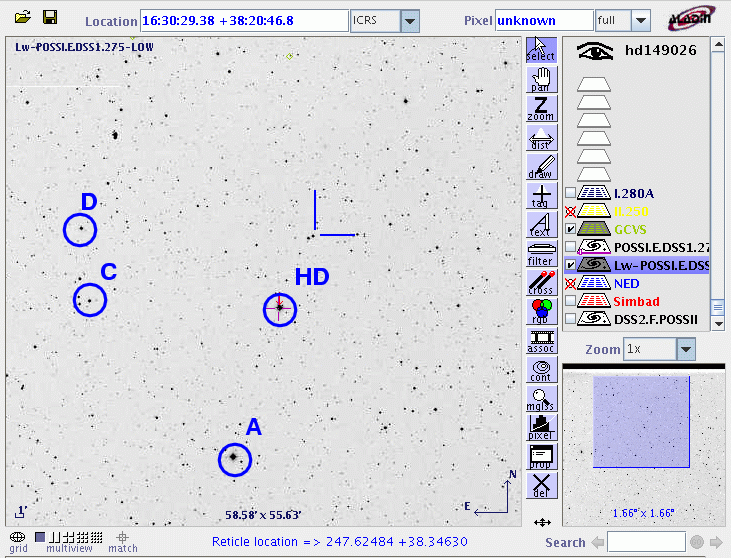
On the night of UT May 31, 2008, the SDSS Photometric Telescope ("PT" for short) took a series of exposures of HD 149026. Conditions were poor at the start of the run. We failed to detect the transit on this night.
Notes from the night
This is a chart of the field. HD149026 is the bright star indicated by the crosshairs. The labelled stars will appear in later analysis.

As a side note, the star marked by short line segments (the northwestern component of a close pair) is an eclipsing binary with a period which _might_ be about 7.7 hours.
The host star of HD149026 has a magnitude V=8.16 according to The N2K Consortium. II. A Transiting Hot Saturn Around HD 149026 With a Large Dense Core. However, there's a note in the Exoplanets Encyclopedia about this planet which states "25 Nov 06: Wright et al 2006 raise doubts about this planet."
Following the procedures outlined by Kent Honeycutt's article on inhomogeneous ensemble photometry, I used all stars available in each image to define a reference frame, and measured each star against this frame. You can find the software package used to do the ensemble photometry online; it's free!
The graph below shows the amount by which instrumental magnitudes from each image needed to be shifted to match the ensemble reference (after removing the two outliers). On a clear night, this graph would show a straight horizontal line.
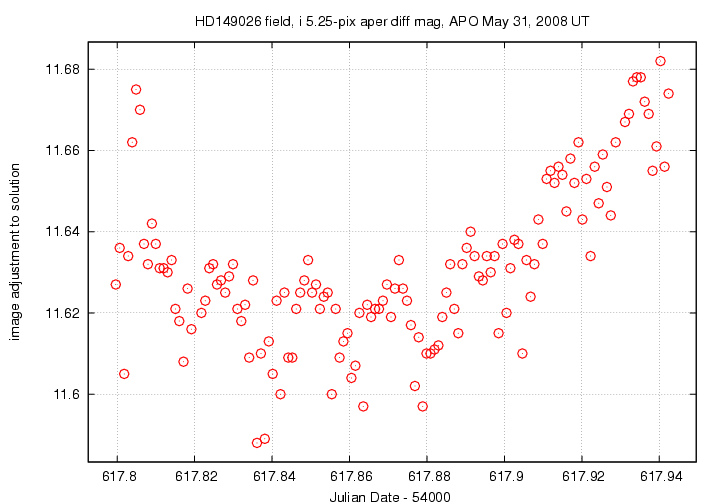
Below is a graph of the scatter in differential magnitude versus magnitude in the ensemble solution.
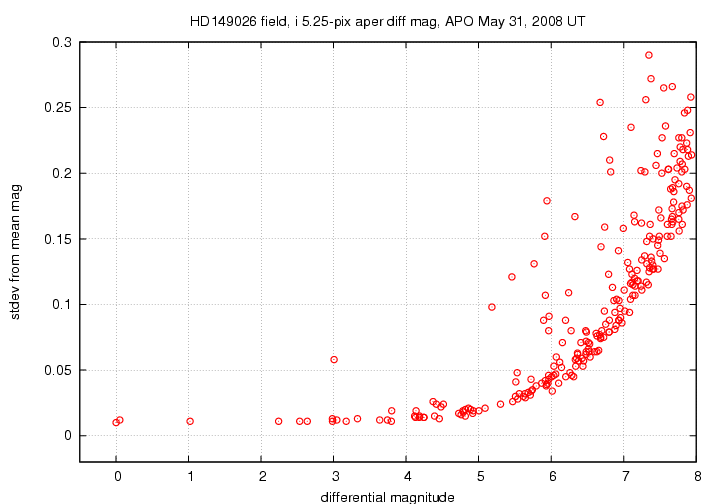
HD149026 is the fainter of the two stars near differential mag 0.0; it ought to show a small excess of scatter over the neighboring star of the same brightness, but doesn't. The "noise floor" in these measurements is about 0.010 mag -- pretty bad, due to few comparison stars (and perhaps the short exposure times). The two brightest stars may be saturated slightly.
Below are the light curves for the target (green symbols) and some comparison stars in the field.
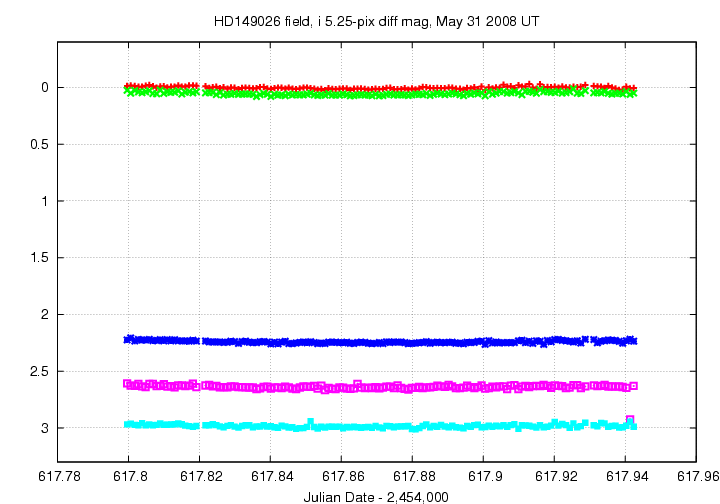
In this closeup, I have shifted the data for two comparison stars to move them closer in magnitude to the target.
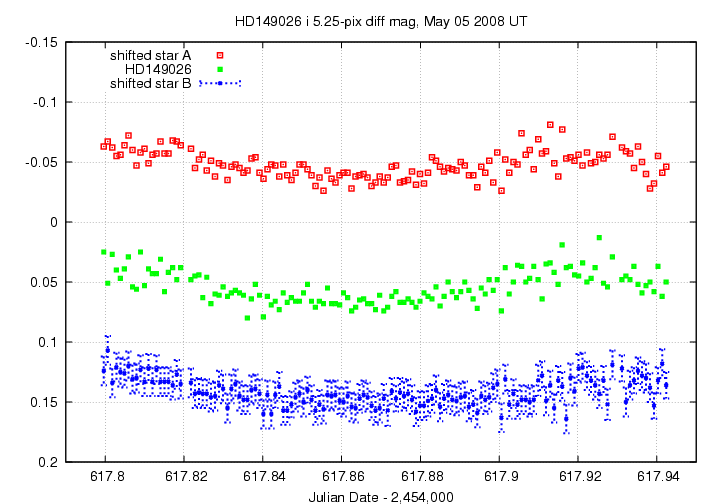
There is a systematic pattern in all three stars. I don't understand it -- I tried giving both of the very bright stars (star A and HD 149026) zero weight in the ensemble solution, but the pattern remains. It's a mystery to me. In any case, it prevents us from seeing any real events in the light curve of HD 149026.
Last modified 06/24/2008 by MWR.